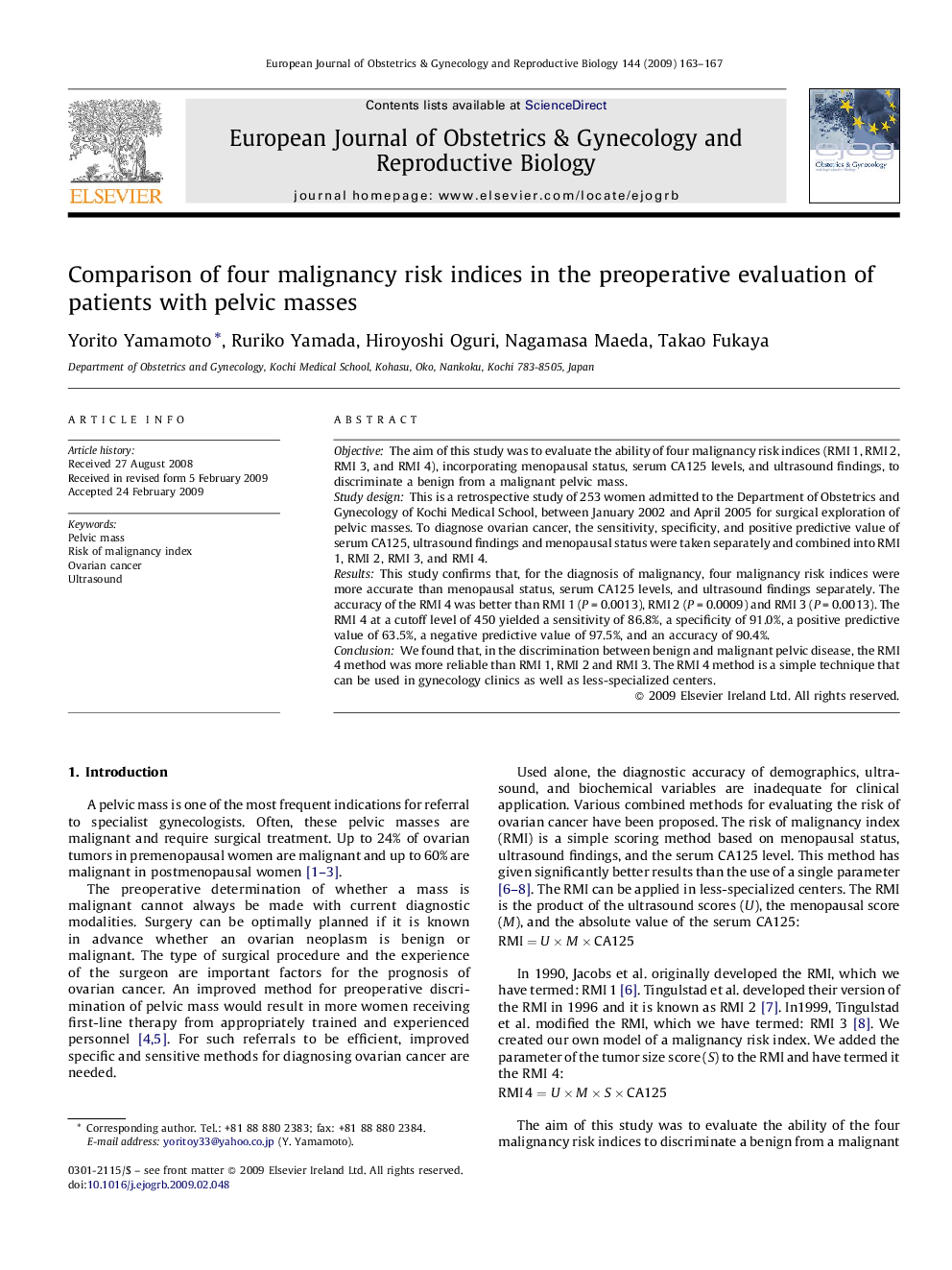| Article ID | Journal | Published Year | Pages | File Type |
|---|---|---|---|---|
| 3921243 | European Journal of Obstetrics & Gynecology and Reproductive Biology | 2009 | 5 Pages |
ObjectiveThe aim of this study was to evaluate the ability of four malignancy risk indices (RMI 1, RMI 2, RMI 3, and RMI 4), incorporating menopausal status, serum CA125 levels, and ultrasound findings, to discriminate a benign from a malignant pelvic mass.Study designThis is a retrospective study of 253 women admitted to the Department of Obstetrics and Gynecology of Kochi Medical School, between January 2002 and April 2005 for surgical exploration of pelvic masses. To diagnose ovarian cancer, the sensitivity, specificity, and positive predictive value of serum CA125, ultrasound findings and menopausal status were taken separately and combined into RMI 1, RMI 2, RMI 3, and RMI 4.ResultsThis study confirms that, for the diagnosis of malignancy, four malignancy risk indices were more accurate than menopausal status, serum CA125 levels, and ultrasound findings separately. The accuracy of the RMI 4 was better than RMI 1 (P = 0.0013), RMI 2 (P = 0.0009) and RMI 3 (P = 0.0013). The RMI 4 at a cutoff level of 450 yielded a sensitivity of 86.8%, a specificity of 91.0%, a positive predictive value of 63.5%, a negative predictive value of 97.5%, and an accuracy of 90.4%.ConclusionWe found that, in the discrimination between benign and malignant pelvic disease, the RMI 4 method was more reliable than RMI 1, RMI 2 and RMI 3. The RMI 4 method is a simple technique that can be used in gynecology clinics as well as less-specialized centers.
